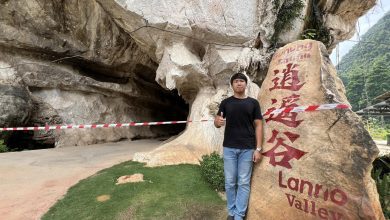Perception and Reality: Is Everything Green and Natural Safe?


By Professor Dr Syed Atif Abbas (Deputy Dean and Professor, QIU’s Faculty of Pharmacy)


Traditional medicines are considered to be alternative treatments that are widely used in developing countries. Recently, however, they have become more popular in developed countries as well.
Usually made from various types of medicinal plants, they sometimes contain other ingredients such as animal parts and minerals. These are usually dispensed by premixed patented preparation, but sometimes they are freshly made by individual practitioners or herbalists.
The World Health Organisation (WHO) reports that more than 70 percent of the global population relies on traditional, or non-conventional medicine. This indicates a lack of knowledge among the public about the benefits of conventional medicine, which drives them toward alternative options.
Neither should we forget the publicity and myths involved in marketing traditional medicines, compared to conventional drugs that are normally released by pharmacists/doctors. Historically, Asians are well known for their high dependency on traditional medicines (Chinese and Indian Ayurvedic, Unani and Sidha formulation) besides conventional pharmaceutical products.
In spite of the aggressive marketing policy from the major pharmaceutical companies, the popularity of traditional medicines is increasing—not only in Asian countries but also in the West. In Europe, the total sales of herbal medicines in 2018 reached more than €3.7 billion. In China, sales revenue from traditional Chinese medicines reached more than $14 billion in 2018—a 23.8 percent increase over the previous year. And according to a 2019 US government survey, 36 percent of American adults use some form of complementary and alternative medicine.
Malaysians are no stranger to traditional or folk medicines either, as its major ethnic groups have a cultural history of using folk medicine for centuries. This huge demand has driven the total market for traditional medicines to be worth more than RM29 billion. Malaysia is among the world’s 12 mega biodiversity-rich countries in terms of number of plant species, and is set to lead the herbal market with its rich biological heritage, cultural background, and trade links.
Many modern anticancer, cytotoxic and other drugs have been extracted from plant sources, including Vinca alkaloids, Reserpine antipsychotics, Yohimbine aphrodisiacs and statins anticholesterolics.
But in spite of the huge usage of traditional medicine in Malaysia, very few systematic studies have highlighted the issues related to the quality manufacturing of traditional medicine.
The question we must ask ourselves is this: is everything green safe? It’s a common perception and marketing tool in our collective mindset, but facts tell a different story. Some deadly poisons are obtained from plant sources, and many herbal products have definite interactions with conventional medicines if taken concurrently.
Health hazards due to the use of traditional medicine are often reported and the inappropriate consumption of herbal preparation can cause serious health complications. Herbs usually contain biologically active ingredients and thus, improper usage may cause toxicity that we need to avoid. The toxicity mainly comes from the ingredient itself or from the processing part. Sometimes, the popularity of traditional medicine drives exploitation, for example when certain parties adulterate these medicines with organic or inorganic substances which can cause chronic or acute toxicity.
According to the Ministry of Health (MOH)’s data from the national tertiary referral centre for liver diseases in Hospital Selayang, 42 percent of drug-induced acute liver failure cases from 2001 to 2017 were possibly due to traditional and complementary medicine.
All herbal medicines should be used cautiously, even though they seem quite safe. Some herbs are toxic when taken in combination with modern medicines, as herbal-drug interactions may cause complications that significantly increase or decrease the absorption of the drug.
Traditional and complementary medicines have pharmacological effects, but they must be used with care. It is the job of health professionals like pharmacists and doctors to educate the public regarding the proper use and misuse of them.
“All things are poisons, for there is nothing without poisonous qualities. It is only the dose which makes a thing poison.” (Paracelsus 1493-1541)


